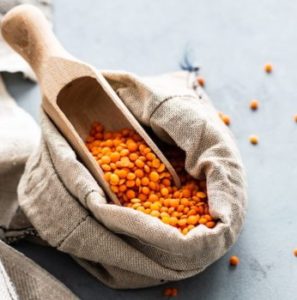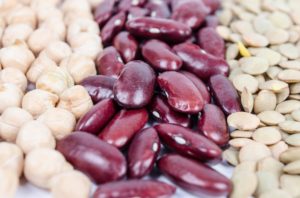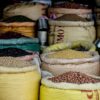Like it or loathe it, we all need good food to both Establish Life and maintain good health. Yet the somewhat evasive or ill-thought out question is, how do we actually get that food (another topic), and how often do we prepare home-cooked food from scratch?
Well, we are continually looking for better ways in which to maintain optimum health. In turn we seek to share that good knowledge with you, hoping it may be helpful to you on your health journey!
In this article we’re going to discuss food prepping in bulk, focussing on legume preparation. You see, bulk food preparation is not only a time and a money saver, but it is a must when investing in your family’s health.
So, first of all, let’s discuss some of the facts. Statista, reported on a bi-annual UK study which took place between 2005 and 2017. The study showed an 11 per cent increase in the use of the British household kitchen, when it came to cooking from scratch or raw food ingredients, just once or twice a week. The 11 per cent increase went from 23 per cent to 34 per cent.(Statista.com, July 9, 2020)
You see, bulk food preparation is not only a time and a money saver, but it is a must when investing in your family’s health.
Now that’s still pretty low kitchen use in our estimation, but ultimately, we all know why that is right? Everyone’s “busy”! So, come with us as we give you some nutritional gems on the benefits of legumes and a simple, effective way of preparing them in bulk. Bulk cooking can be quite straightforward, but the question is, are you willing to commit to the process?

What are legumes?
Legumes are power-packed plants that produce a pod with seeds inside of them. The word ‘legume’ simply describes the seeds of these plants. Legumes include lentils, peas, chickpeas etc. Legumes are rich in both protein and healthy fibers (excellent for good bowel movements), and contain a good amounts of carbohydrates (for energy), iron (to make good blood), as well as containing high levels of folate (great for brain and nervous system development, especially when pregnant). Legumes also provide a rich source of magnesium (for optimum muscle and cell repair), potassium (reduces blood pressure and water retention, and also protects against stroke, and can aid in preventing osteoporosis and kidney stones). Legumes are amongst one of the best plant-based sources of quality and sufficient protein.
How do we do it?
We soak our legumes before cooking them (on occasion we don’t soak red lentils). So here’s our ingenuous FIVE STEP process on how to prep your legumes:
- Add 1kg of dried legumes in an extra-large stainless steel (non-stick free) pot. Then add water to cover your dried legume of choice, and massage the legumes using the water to clean them. Rinse and repeat until the water appearance is as clear as possible.
- Then soak your legume of choice overnight in the pot. Tip #1: Ensure that you add at least twice as much water to legumes, as they will absorb much of the water.
- The next morning remove the remaining water and then give your legumes a final wash/massage (or two).
- Add boiling water to your legumes, ensuring that it’s several inches above your dried legumes and boil as per the instructions. Usually very high heat for the first 15 minutes. Then reduce to medium/high heat for another 40-60 minutes (for hardy beans i.e. kidney beans) or 20-40 minutes (for softer legumes i.e. brown lentils). Keep an eye on the legumes and be sure to remove any foam which comes to the surfaces. Add more boiling water as needed.
- Once your legumes are cooked, that is soft and tender texture, remove the water, rinse and allow the legumes to cool before boxing up to put in the freezer.
Do the above 2-3 times a month and you’ll have lots of variety in your freezer…home-made fast food
.
Amazingly, just 1kg of dried legumes will yield four to five food containers (approx. 3 cups of cooked legumes per container).
This method has saved us much time, as you can easily take a container out of the freezer last thing at night and then whip up a fresh, home-made stew, burgers, shepherd’s pie, hummus or the like the next morning!
Tip #2: The above steps for cooking your legumes can easily be followed before you prep your morning breakfast or evening meal and they’ll be ready before you know it.
Tip #3: If you have two extra-large stainless steel (non-stick free) pots, why not double up and maybe soak both chickpeas and green lentils overnight and follow the above instructions! Do the above 2-3 times a month and you’ll have lots of variety in your freezer… home-made fast food.
Key benefits of preparing your own legumes:
- Avoid the shop bought nasties from tinned legumes such as BPA and aluminium.
- Super cost-effective. You can easily save more than 50% on legumes when you buy them dried.
- More ready on-the-go and nutritious home-made fast food options available.
Give it a try and avoid the nasties of packaged legumes (article coming soon).
Do you prepare your legumes in bulk?
Let us know in the comments section and feel free to share any useful tips.
References:
Statista.com – Food & Nutrition: About how often would you prepare or cook a meal from scratch? (i.e. using raw/fresh/primary ingredients)? Date Accessed: 9th July 2020











